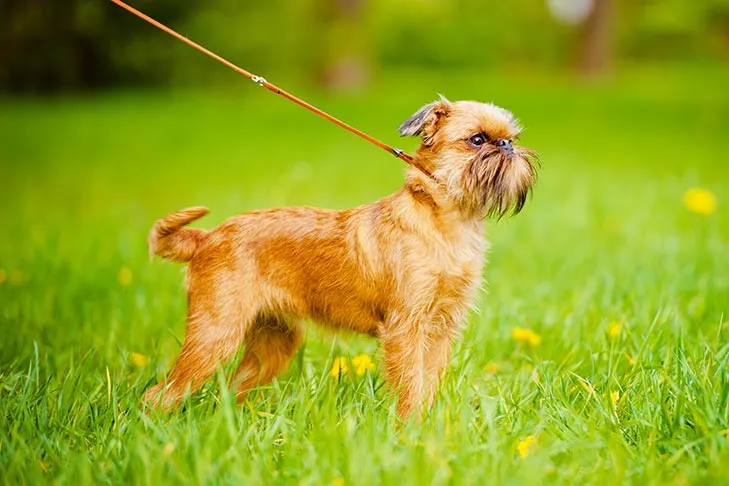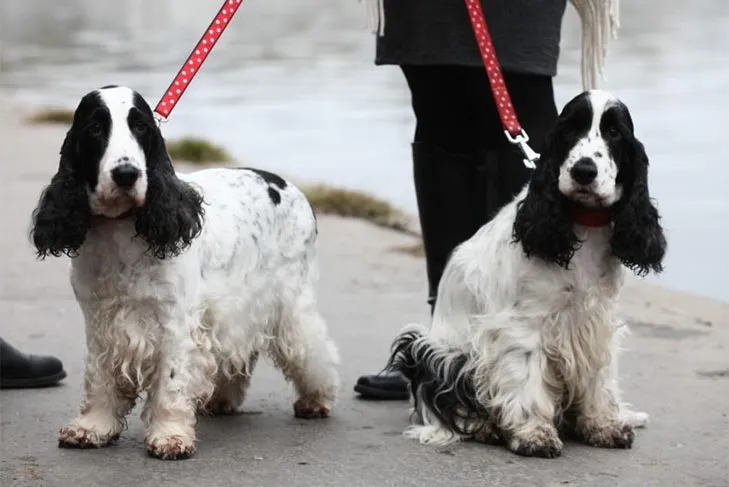Convincing your dog that it’s time to go outside for a potty break is challenging enough, but having them constantly tugging and biting at the leash during a stroll adds another layer of frustration. This behavior is common and understandable, especially among young, playful, and excitable dogs, but it can manifest at any age. Leash biting is often more than just a bad habit; it’s a symptom of your dog feeling frustrated or not fully understanding what being on a leash means, let alone how to walk politely without pulling or mouthing. Thankfully, with consistent training and understanding, you can prevent or eliminate this behavior, ensuring more enjoyable walks for both you and your canine companion. For more advanced training, such as how to train recall in older dogs, explore our other guides.
Why Dogs Bite or Mouth Leashes
To effectively address and stop your dog from biting the leash while walking, it’s crucial to first understand the underlying reasons behind this behavior. Dogs typically don’t bite their leashes out of spite; there’s usually a specific motivation at play. One common reason is boredom and a lack of mental enrichment. These dogs might be trying to gain your attention and initiate a game during the walk, viewing the leash as a convenient tug toy.
Another significant factor is a simple misunderstanding of leash etiquette. Many dogs haven’t been taught what it means to be on a leash or how to walk with a loose lead. In such cases, owners might have inadvertently set expectations that are too high for their dog’s current training level. Furthermore, some dogs bite or tug on the leash out of frustration, especially when they are in an overly stimulating environment and feel agitated or restricted by the leash. This can escalate quickly if not managed, potentially leading to other behavioral issues like reactivity if the dog feels trapped or overwhelmed.
Reward Desired Behavior
The foundational step in teaching your dog to stop biting the leash is to reinforce the behaviors you do want to see. This begins with teaching your dog how to walk on a loose leash. Whenever you clip the leash onto your dog, be prepared with plenty of high-value treats. During the walk, praise and reward any positive behavior your dog exhibits. This could mean giving a treat when your dog walks calmly by your side, looks up at you, or even appropriately engages with their environment by stopping to sniff. Sniffing is a naturally calming and rewarding activity for dogs, and encouraging it can significantly improve their overall leash walking experience.
Frequent rewards for desired on-leash behavior form the bedrock of successful loose leash training and are highly effective in preventing leash biting. Remember, behavior that is reinforced is more likely to be repeated. By proactively rewarding your dog for positive actions while leashed, you can steer them away from the habit of mouthing the leash before it even begins, making the experience more pleasant for everyone involved. Consistent positive reinforcement creates a strong association between good behavior and positive outcomes.
Offering Alternative Behaviors
Some individual dogs and certain breeds are naturally more “mouthy” than others, often seeking out opportunities to hold or carry things in their mouths. For these dogs, leash biting can become a habitual behavior. A straightforward solution to redirect this drive is to provide your dog with an acceptable item to hold during walks, such as a favorite ball or a designated toy. For dogs with a strong urge to tug, a tug toy can be particularly effective in channeling this energy constructively, preventing them from turning their attention to the leash.
You can use the tug toy as an interactive tool during the walk, stopping for a quick game of tug before your dog has a chance to start biting the leash. This not only serves as a reward for walking without leash mouthing but also offers an appropriate outlet for their innate drive to tug. This strategy allows your dog to fulfill their need to use their mouth in a way that is both productive and enjoyable, reinforcing good habits while discouraging the unwanted behavior. For insights into other behavioral challenges, such as how to stop your dog barking at night, our resources can provide guidance.
 Brussels Griffon standing attentively on a leash in the lush green grass.
Brussels Griffon standing attentively on a leash in the lush green grass.
Leash Handling Techniques
Effective leash handling skills are essential for reducing conflict and frustration during walks. A key principle is to keep the leash loose and positioned behind your dog as much as possible. Many dogs react negatively to a tight leash, which can trigger frustration, causing them to spin around and tug at it. Similarly, if the leash dangles in front of them or gets in their way, dogs might perceive it as a toy and attempt to bite or mouth it.
It’s important to remember that while we understand leashes are not toys, our dogs do not inherently know this. Set your dog up for success by avoiding dangling the leash playfully in front of them. By consistently rewarding your dog for walking on a loose leash, checking in with you, and engaging appropriately with the environment, you significantly decrease the likelihood of them becoming frustrated and resorting to leash biting. This proactive approach to leash handling creates a more harmonious walking experience. If you are training a younger companion, you may be interested in learning how to train puppy for emotional support.
Reducing Conflict and Proactive Engagement
Instead of resorting to punishment when your dog tugs or bites the leash, a far more effective strategy is to anticipate and prevent the behavior. This involves proactively engaging your dog throughout the walk. If you’ve identified specific locations or situations where your dog is more prone to turning and biting the leash, make an effort to avoid them whenever possible. Redirect their attention and maintain engagement using treats, toys, or short bursts of play. This can be especially helpful if you are also working on training them for specific roles like how to train your dog to be a service dog or even how to train your puppy to be a service dog.
With consistent practice, your dog will gradually learn that walking calmly by your side is a much more rewarding and enjoyable experience than mouthing or tugging at the leash. The goal is to build a positive association with leash walking, transforming it from a source of frustration into an opportunity for connection and shared activity.
 Two English Cocker Spaniels attentively walking on leashes through a field.
Two English Cocker Spaniels attentively walking on leashes through a field.
Successfully stopping your dog from biting the leash requires a combination of understanding their motivations, consistent positive reinforcement, providing appropriate alternatives, and skillful leash handling. By focusing on rewarding desired behaviors and proactively engaging your dog, you can transform walks from a struggle into a pleasant and bonding experience. Remember, patience and consistency are key to fostering good habits and a strong, positive relationship with your canine companion.
